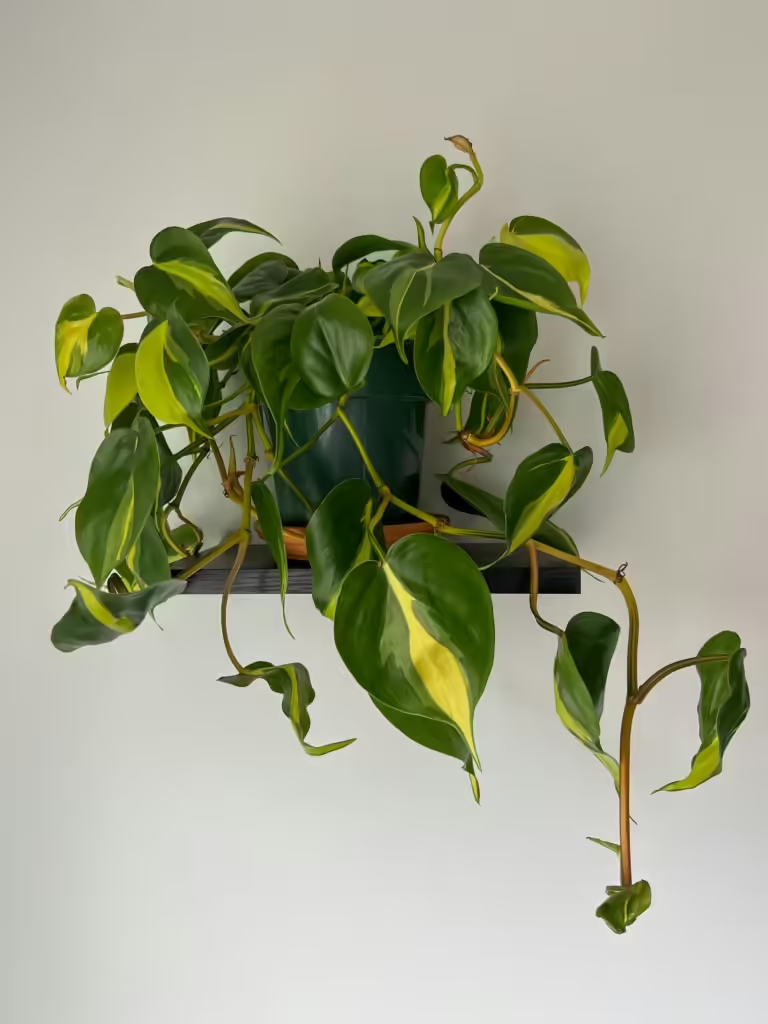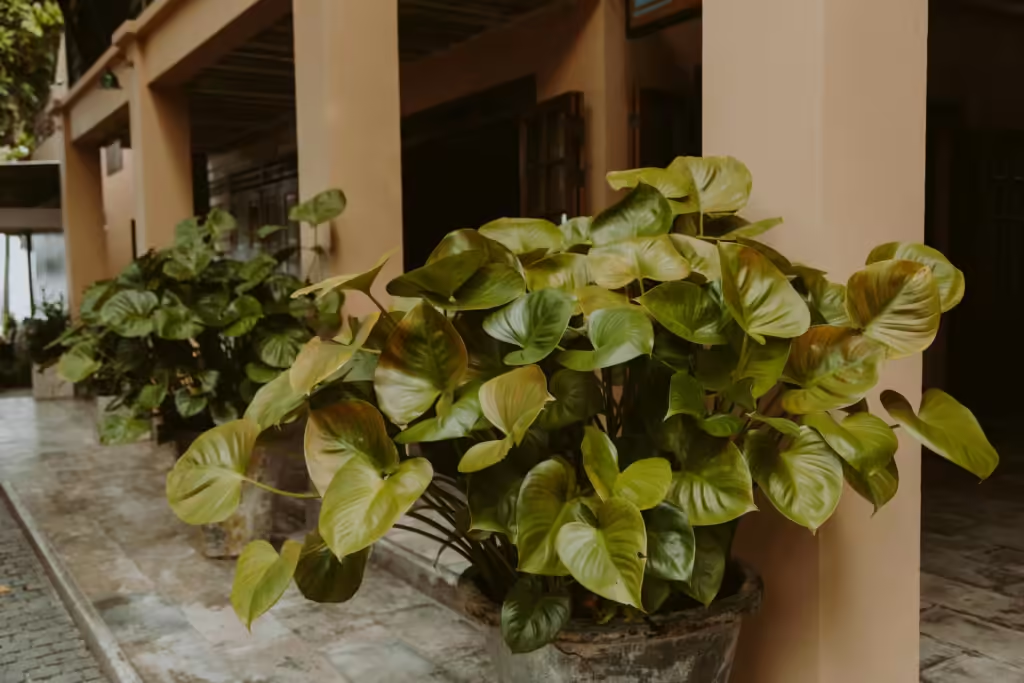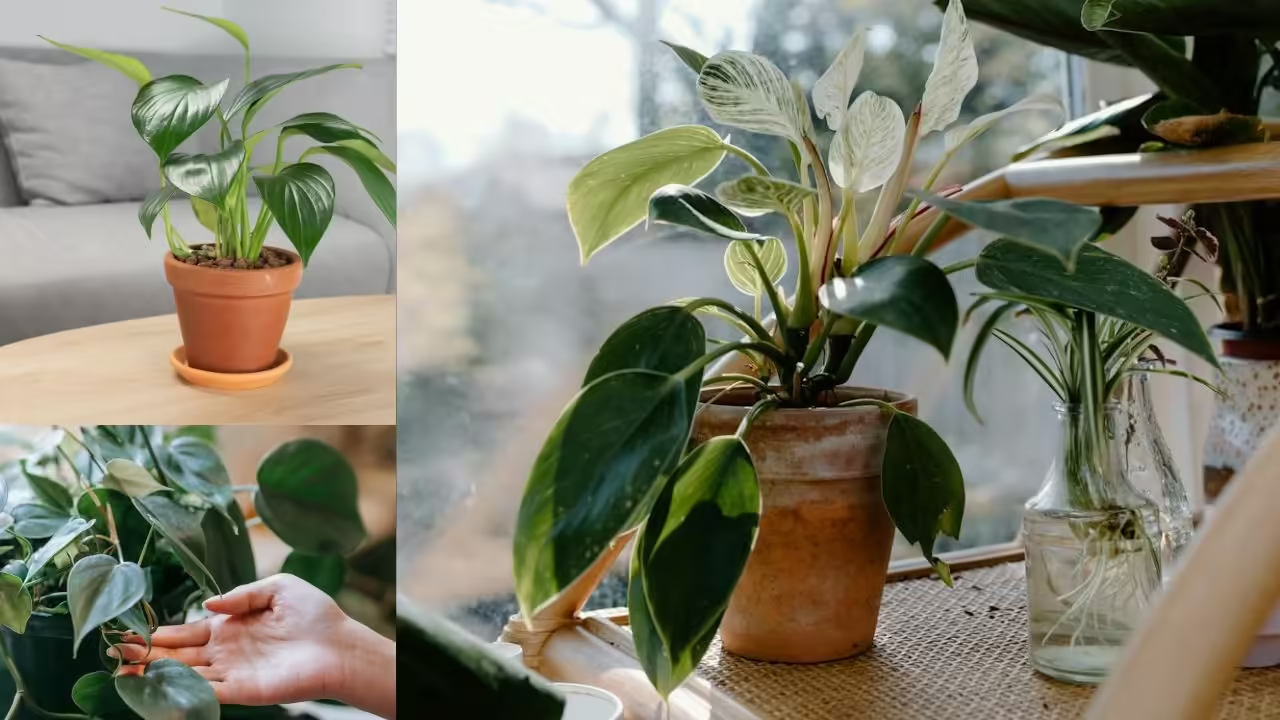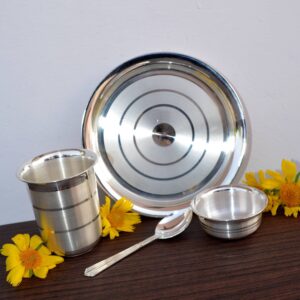Due to its rough, leathery leaves, Philodendron Rugosum—also referred to as the “Pigskin Philodendron”—is an uncommon and highly sought-after houseplant. This unusual plant brings an exotic flair to any indoor garden, but it also needs special attention to survive. We’ll go over all you need to know about Philodendron Rugosum in this guide, including its varieties, applications, maintenance, and propagation.

Philodendron Rugosum Varieties
There are numerous intriguing types and variants of Philodendron rugosum, each with unique characteristics:
- Standard Form: Noted for its pigskin-like, highly ridged leaves.
- Aberrant Form: A unique variety that deviates from the typical form in terms of leaf forms and patterns, making it extremely sought-after by collectors.
Philodendron Rugosum Uses
The main purpose of growing Philodendron Rugosum indoors is for aesthetic purposes. It is an eye-catching addition to indoor plant collections because of its distinctive leaf. It is useful for:
- Boost Interior Décor: Its striking, textured leaves give rooms an air of exoticism.
- Enhance Air Quality: It removes pollutants from the air, just like many philodendrons do.
- Make Green Spaces: Adding vegetation to buildings can bring a sense of peace and a connection to the natural world to both homes and offices.
How to Propagate Philodendron Rugosum
Although propagating Philodendron Rugosum is not difficult, it does take time and proper method. This is a comprehensive guide:
- Pick the Correct Stem: Look for a stem that is in good health and has one or two nodes, or the places where leaves attach to the stem.
- Slice the Stem: Make a cut beneath a node with a fresh, sharp knife or pair of scissors. Aim for a cutting length of approximately 4-6 inches.
- Prepare the Cutting: To reveal the nodes, remove any leaves that are close to the bottom of the cutting.
- Rooting in Water: Make sure the cutting’s nodes are immersed by placing it in a jar of water. The jar should be kept out of direct sunlight but in a warm, well-lit place.
- Transplanting: Place the cutting into a pot with soil that drains well after a few weeks, once roots have formed.

How to Care for Philodendron Rugosum
Maintaining the health and attractiveness of Philodendron Rugosum requires proper maintenance.
- Light: Provide bright, indirect light. Too much direct sunlight can scorch the leaves, while too little light can slow growth.
- Soil: Use an airy, well-draining soil mixture. Peat, perlite, and orchid bark combined are a good combination.
- Watering: Make sure the soil is constantly damp but not soggy. When the top inch of soil seems dry, water it.
- Humidity: High humidity is ideal for Philodendron Rugosum growth. To improve humidity, think about using a humidifier or putting a tray of water close to the plant.
- Temperature: Keep the temperature between 18 and 27°C (65 and 80°F). Steer clear of abrupt temperature fluctuations and cold drafts.
- Fertilization: During the growing season, apply a half-strength solution of a balanced liquid fertilizer once a month.
Philodendron Rugosum Price
Because Philodendron rugosum is regarded as a rare plant, its cost reflects this fact. The cost of a plant might vary from $50 to $200 or more, based on its size and state. Buy from reliable vendors just to make sure you’re obtaining a healthy specimen.

Understanding Philodendron Water Needs
Proper watering is essential for the health of your Philodendron:
- How Much Water Is Needed for a Philodendron? Fill the pot to the brim with water, letting any extra run off fall out. Generally, watering once a week is sufficient, though the frequency varies according on the surrounding conditions.
- How to Tell if Philodendron Needs Water: Examine the soil’s upper inch. Water it now if it feels dry to the touch. Wilting leaves may also be a sign that water is needed by the plant.
Water Propagation and Lifespan in Water
- Can You Water Propagate Philodendron?: It is possible to propagate philodendrons in water. Take the same procedures as for soil propagation, but don’t remove the cuttings until roots start to grow.
- How Long Can a Philodendron Live in Water?: Under the right circumstances, philodendrons can live in water for an endless amount of time. But when eventually planted in soil, they usually grow more vigorously.
Philodendron Rugosum Flower
Rarely does Philodendron Rugosum bloom indoors. When it does bloom, the thick, leathery leaves usually hide the small, unimpressive blooms. More than its blooms, this plant is grown for its distinctive foliage.
Additional Propagation Techniques
There are numerous kinds of philodendrons, and most species share similar growing methods:
- How to Propagate Philodendron Erubescens: Use node-containing stem cuttings, submerge them in water or soil, and make sure they get some indirect light.
- How to Propagate Philodendron Hederaceum: This plant, often called Heartleaf Philodendron, spreads quickly when stem cuttings are buried in soil or water.
- How to Propagate Philodendron Plant in General: Trim any good branches with nodes, root in soil or water, and preserve in a warm, humid place with some indirect light.
Conclusion
An exotic touch can be added to your home with the interesting and unusual Philodendron Rugosum houseplant. You can take pleasure in having a robust and healthy Philodendron Rugosum by being aware of its water requirements, propagation methods, and maintenance demands. These tips can help make sure your plant thrives for years to come, whether you’re an experienced gardener or a novice.
FAQ
What is Philodendron Rugosum?
Philodendron Rugosum, also known as the Pigskin Philodendron, is a rare and unique houseplant known for its textured, leathery leaves that resemble pigskin. It is prized for its distinctive foliage and exotic appearance.
How do I propagate Philodendron Rugosum?
Propagation can be done through stem cuttings. Select a healthy stem with at least one or two nodes, cut below a node, and place the cutting in water or well-draining soil. Keep the cutting in a warm, well-lit area until roots develop.
Why are the leaves of my Philodendron Rugosum turning yellow?
Yellow leaves can indicate overwatering, underwatering, or nutrient deficiencies. Check your watering schedule, soil moisture levels, and ensure you are providing balanced fertilization. Adjusting these factors can help restore your plant's health.
Can I grow Philodendron Rugosum from seeds?
Growing Philodendron Rugosum from seeds is possible but challenging due to the rarity of the seeds and the slow growth rate. Propagation through stem cuttings is more common and easier.
What is the best soil mix for Philodendron Rugosum?
well-draining, airy soil mix is best. A combination of peat, perlite, and orchid bark works well for Philodendron Rugosum.
What pests are common on Philodendron Rugosum?
Common pests include spider mites, mealybugs, and scale. Regularly inspect your plant and treat infestations promptly with insecticidal soap or neem oil.
Can Philodendron Rugosum be grown outdoors?
Philodendron Rugosum can be grown outdoors in tropical and subtropical climates where temperatures do not drop below 65°F (18°C). In other regions, it is best grown as an indoor plant.
What type of light is best for Philodendron Rugosum?
Bright, indirect light is best for Philodendron Rugosum. Too much direct sunlight can scorch the leaves, while too little light can slow its growth.
What are some other popular types of Philodendron to propagate?
Other popular types of Philodendron to propagate include Philodendron Erubescens (Red-leaf Philodendron) and Philodendron Hederaceum (Heartleaf Philodendron). Both are easy to propagate using stem cuttings.
Can Philodendrons be propagated in water?
Yes, Philodendrons can be propagated in water. Place stem cuttings in a jar of water, ensuring the nodes are submerged, and keep them in a warm, well-lit area until roots develop.
For More Recent Articles click here













